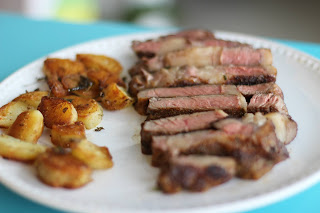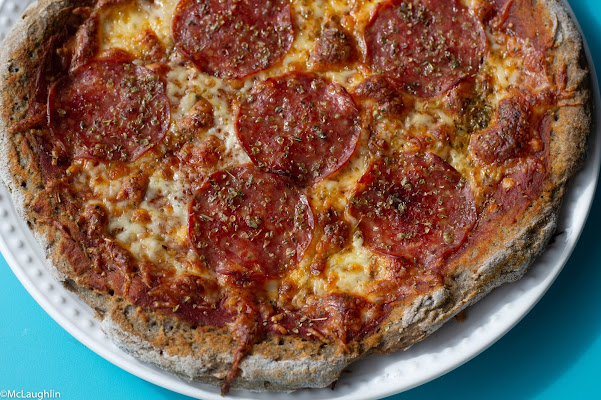I have always cooked steaks on the grill until a good crust showed up. Obviously, most of the time the meat came out very dry and definitely overcooked, but the deliciousness of the crust was enough for me to appreciate the meat. But, I have been wrong all the time. It is possible to have a perfectly cooked steak, with an amazing crust and still very, very juicy on the inside.
There are two different methods you can use. The reverse searing method and the sous-vide method. My favorite is the sous-vide method, which allows me to prepare the food in advance and leave it to cook without being worried about overcooking or undercooking my meal.
The
sous-vide method consists of a water bath at a controlled temperature, and, before you start to swear, I am not talking of boiling your steak. The food will be inserted in sealing bags and vacuum-sealed, or if you don't have a vacuum sealing you can use ziplock bags and the displacement method, which allows you to remove most of the air simply putting it in a container full of water and gently pushing it down almost to the top and then close the zip. The pressure of the water will push the air to the top of the bag and then out.
The other toy you need is a Roner, a sous-vide circulator that keeps the water at an exact, constant temperature and in motion that allows the food to cook evenly and completely. There are a lot of different brands in the market you can choose from and most of them work perfectly. I have been using an Anova, which works admirably, so take that into consideration if you need one.
Talking about steaks now, you can use every cut you like but for me, Ribeye and Picanha are the right way to go.
More important than the cut is the marbling degree. The more marbling the better!!! Intramuscular fat adds juiciness and flavor to your steak, and that's exactly what we are looking for.
The thickness is another relative factor too. You should look for a steak between 1.5 and 2 inches. A bigger one works too but it increases the time needed to cook it evenly.
If available, look for dry-aged beef. It increases the cost but it is money well spent.
Temperature is what really makes the difference between a good steak and a piece of cardboard. Here is when the sous-vide circulator jumps with both feet in your face and teaches you the right way to cook steak. You now have the possibility to choose the temperature your steak must turn out. Rare, medium, or well is in a range of 40° F, and you can select the temperature at a half-degree to meet your preference. Starting at 120°F for the rare, 140° F for the medium, and 160°F for the well-cooked steak. The higher temperature you cook, the less juicy and tender your steak will turn out.
Time is the other fundamental factor that encodes the process. The lower the temperature, the more time that is necessary to allow the enzymes to break down the protein and the fat to become tender.
Very rare to rare ----- 120°F to 128°F ------ 1 to 2:30 hours
Medium-rare ----- 129°F to 134°F ------ 1 to 4 hours
Medium ----- 135°F to 144°F ------ 1 to 4 hours
Medium-well ----- 145°F to 155°F ----- 1 to 3:30 hours
Well-done ----- 156°F to up ----- 1 to 3 hours
My suggestion is to cook in a range between medium-rare to medium for 2 to 2:30 hours to have a tender and juicy steak. If you take the steak directly from the freezer, add 30 minutes to the total time.
Even though the steak is perfectly cooked, the aspect is everything but not appetizing. You need that beautiful crust, known as the
Maillard reaction. The only way to get it is to dry the surface of the meat with paper towels until all the moisture is gone, then put on a thin layer of olive oil, or mayo, and sear it directly on the fire from your grill, for 30 to 45 seconds per side. Turn the steak and repeat it 2 times.
If you don't have a grill available, you can use a cast-iron skillet. Get sure that the pan is very hot before you put the steak in. The good thing about using the pan is that after the second flip you can reduce the temperature, add a cube of butter, garlic cloves, fresh rosemary, or thyme, and baste your stake until the crust is done. It will increase the flavor and herby fragrance.
At this point, you may think your steak is done, but it is not. It is perfectly cooked on the inside and the delicious crust on the outside is inviting you to eat it, what else do you need? You need to wait more. Put the steak onto a cutting board and let it sit between 4 to 5 minutes. This will allow the juiciness in the inside to evenly spread and to retain the liquid when you, finally, will cut your steak.
Remember to cut against the grain to get an extra enjoyable bite.


Comments
Post a Comment